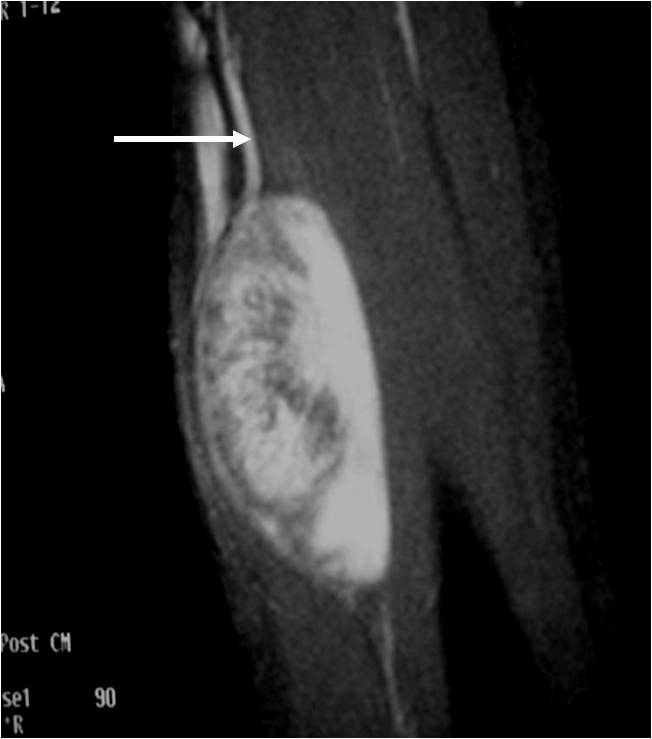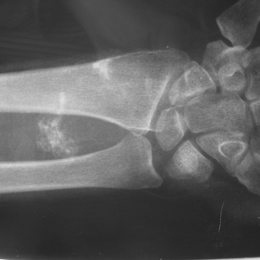What is a Neurofibroma?
Neurofibroma is a benign (non-cancerous) tumor of peripheral nerves. They present as small masses with mild to no symptoms. While neurofibroma can be a solitary entity, it may also be associated with neurofibromatosis (NF-1), which is a genetic condition where those affected develop numerous peripheral nerve tumors, including neurofibromas or schwannomas. This soft-tissue tumor occurs in all ages and is equally common in males and females.
Who is usually affected?
- • There is no specific prevalence for gender or age, however most neurofibroma cases occur between the ages of 20-30.
Signs and Symptoms
- • Signs and symptoms include a small, painless, slow-growing nodule.
Causes
- • Neurofibroma is often associated with neurofibromatosis (NF-1), which is a genetic disorder that causes the development of numerous peripheral nerve tumors due to a mutation.
Common Sites Involved
- • Any peripheral nerve.
- • Superficial tumors of the dermis (skin), including the orbit, face, back, inguinal area.
- • Localized cutaneous neurofibroma- grow as a localized nodule.
- • Diffuse neurofibroma- ill-defined, infiltrative mass involving the skin or soft-tissue.
- • Localized intraneural neurofibroma- a solitary intraneural mass involving a peripheral nerve.
- • Does not metastasize.
Biological Behavior
- • Usually arises from small nerves and readily extends into soft-tissue.
- • Low recurrence rate after surgical removal.
- • Isolate neurofibromas rarely change to a malignancy.
- • Does not metastasize.
Diagnosis
- • The work-up for neurofibroma often consists of a physical examination, X-ray, MRI, CT, and bone scans. The diagnosis is often confirmed with a biopsy, which samples the tumor for further analysis.
Risk to your limbs
Neurofibroma is a non-cancerous soft-tissue tumor that arises from any peripheral nerve. Neurofibroma does not metastasize or spread throughout the body. Due to its location, there is a risk of nerve damage associated with neurofibroma. It is important to seek and consult a doctor, obtain proper radiographic studies, and confirm the diagnosis, as some differential diagnoses include schwannoma, and malignant peripheral nerve sheath tumor (MPNST).
Radiographic imaging is used to help form a diagnosis of neurofibroma. These include X-Ray, MRI, CT and Bone Scans.
Treatment of Neurofibroma
The primary treatment of neurofibroma consists of surgical excision. There is some risk of neurological damage is the tumor involves a major nerve. However, once removed, there is a low recurrence rate. Since neurofibroma is a benign soft-tissue mass, chemotherapy and radiation are not needed to treat.
Surgery
Surgical treatment includes wide or radical resections to remove the complete tumor and additional margins. The removal of additional, surrounding margins ensures that the tumor is completely removed and decreases the chances of the tumor coming back.






